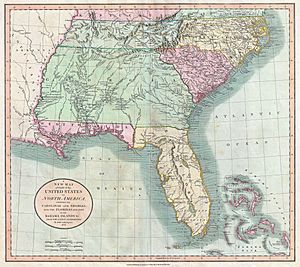Cherokee cultural citizenship facts for kids
Cherokee cultural citizenship is about feeling like you truly belong to the Cherokee Nation. It's a special way members connect through shared culture and experiences.
What is Cultural Citizenship?
Cultural citizenship is a deep feeling of belonging. It connects people in a community. They share daily life experiences. It's like being part of a big family.
This type of citizenship shows up in many ways. It includes language, stories, education, art, and religion. It's different from legal citizenship. Legal citizenship means you are officially a citizen of a country.
Cultural citizenship works with legal citizenship. Together, they help people understand where they belong. Unlike legal citizenship, cultural citizenship isn't limited by borders. Shared culture can connect people worldwide.
How the Cherokee Nation Showed Cultural Citizenship
In the 1800s, the United States used legal citizenship to exclude many groups. This included racial and religious minorities. The US government kept the Cherokee Nation from becoming US citizens. This was based on unfair ideas about the Cherokee people.
Three important court cases showed this exclusion. They were Johnson v. M'Intosh, Cherokee Nation v. Georgia, and Worcester v. Georgia. These cases wrongly questioned the Cherokee's intelligence. They also challenged the Cherokee Nation's right to govern itself.
The United States offered the Cherokee a chance for legal citizenship only once. This was after the 1817 Treaty of the Cherokee Agency. This treaty started the Cherokee's forced move westward. It offered land and US citizenship to Cherokee individuals. But they had to leave their tribal lands. They also had to give up their tribal membership.
The US government did not truly connect with the Cherokee. They did not want to share a sense of community. The treaty's main goal was to get valuable tribal lands.
The Cherokee Nation did not want US legal citizenship. They showed this during the Cherokee Nation v. Georgia court case. The Cherokee said they were "a foreign State." This meant they were their own nation. They did not owe loyalty to the United States.
The Cherokee's main concern was their own land and self-rule. They did not care about becoming US citizens. The only citizenship they valued was their own tribal membership. This was separate from any other state or nation.
The Cherokee Nation had its own rules for legal citizenship. These rules involved issues like slave status and the freedman controversy. But they also valued cultural citizenship. They showed this through their literature, language, and education. They also showed it through their interest in global events.
The Cherokee's idea of global cultural citizenship proved something important. It showed that the US view of them was wrong. The US thought the Cherokee were isolated. They believed the Cherokee could not understand life beyond their own lands.
Examples of Cherokee Cultural Citizenship
The Cherokee Phoenix was the first newspaper published by Native Americans. It showed many parts of Cherokee cultural citizenship. The newspaper featured literature and poetry. It also promoted education and language. It showed interest in global cultures and history. It also discussed US politics and government.
This newspaper helped the Cherokee Nation connect. It allowed them to share a global sense of community. It helped them feel like they belonged together as a tribe.


